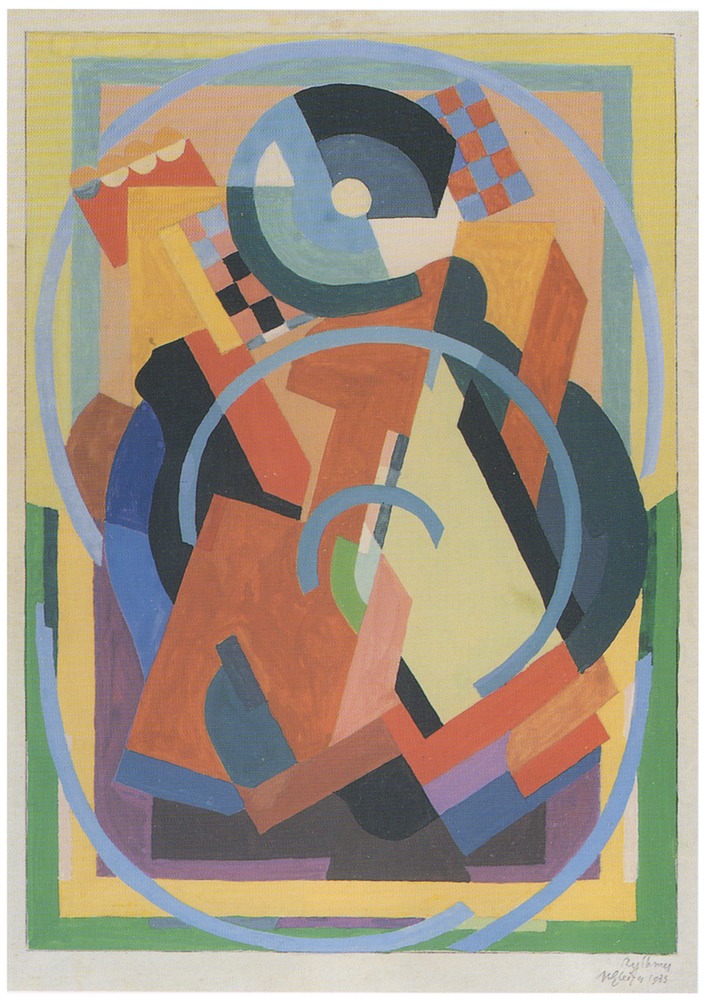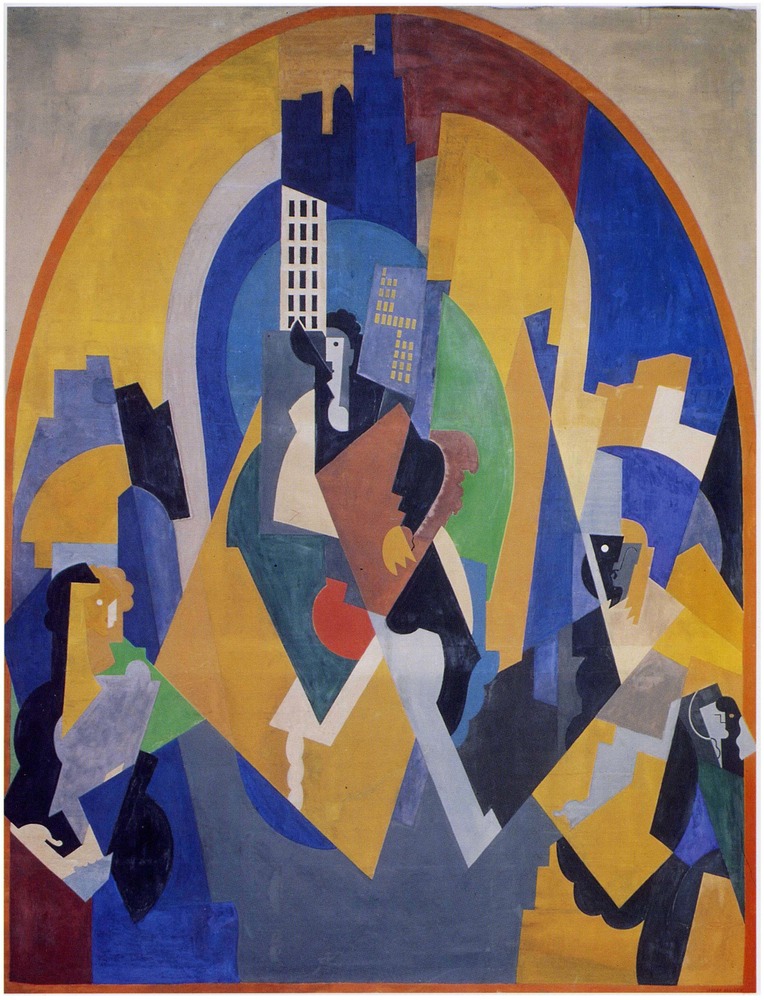Back to article index
Previous
REASONS FOR DISSATISFACTION
But if we compare these works with, for example, the Figures Lumières of the 1930s we can see that there is still a very great difference between them. They have in common a circular movement prepared by the manipulation of rectangular planes. But in the 1930s the movement is much more gradual. Each element in the drawing and each colour prepares the way for the element or colour that comes after it. The whole is derived from the initial plane surface (the overall shape of the canvas) in a way that is rigorously logical so that the eye, following it, engages the mind in a process which can, justly, be called 'contemplation'. In 1916-17, by contrast, the interrelation of planes and curves establishes a sort of net which enables many sensations to exist together on the canvas. Each of these, certainly, participates in a common movement, but they remain distinct. It is through combining a large number of distinct sensations – 'de plans, d'aperçus, d'actions', as he says to Barzun – that Gleizes hopes to rise to a global or 'planetary' vision.

Rythmes, 1933-4
Gouache, 28 x 20 cm
Private collection, USA
The result is a work that is almost less suitable for quiet contemplation than the Cubist works which precede it. The very fact that in these earlier works he avoided the straightforward presentation of the rectangle or the curve, and used very restrained colours, enables the eye to pass slowly from one thing to another, to change direction, to take its time. It could even be said that Gleizes' use of the third dimension provides a certain breathing space, enabling him to avoid the too violent contrast between juxtaposed forms and colours which is always a danger in the Cubist and early non-representational painting of this period (though some painters, notably Léger, tried to make a virtue of it). Those works of Gleizes' in which the multiple perspective is still at work seem to me to be closer in spirit to the great Contemplations of the 1940s than the works of 1916-17 in which the principle of the flat surface is beginning to assert itself.
The problem is that the flat surface presupposes certain conditions that have to be fulfilled before its possibilities can be exploited; and at this time Gleizes' knowledge of those conditions is still very limited. We may speculate that at some point in 1917, Gleizes suddenly became aware of the fact — perhaps in the middle of an intolerable Summer spent in the company of Picabia and Varèse at a time when Picabia was beginning to lose control under the combined influence of cocaine and alcohol. In particular, we may imagine, he realised that these were not the means by which he could arrive at 'la conscience de la planète'; that in fact it was not 'la conscience de la planète' (the multiplication of sensations) that was necessary, but consciousness of the universal – of the common principle that underlies the multitude of sensations. Which is how he interprets this period in the Souvenirs:
'It was on the subject that I continued exclusively to rely. I tried to go beyond it, to enter into other regions, I moved it away from its external appearance but it was still always the thing which in the end I thought capable by its own qualities to resolve itself through an improbable transposition into a complete form. I never suspected at the time that instead of external images what was needed were laws.'
He has realised this by the end of 1917, and that is what explains his silence in 1918 and the ease with which he accepted Metzinger's criticism in 1919. He has achieved something of great importance but he cannot develop it. It has implications which he cannot understand and if he is to understand it he must start again from the beginning, give up his love of variety, of that variety of sensations which, at the moment at which he wrote his letter to Barzun, was the very essence of his desire to paint. It must have been a very painful realisation, intimately linked to the one, overwhelmingly important, event which we know occurred in 1918 — his religious conversion, 'consequence' he tells us 'of feelings and of reason which has reached the limits of its possibilities.' (23)
(23) Dom Angelico Surchamp quoting a conversation he had with Gleizes in L'Itinéraire pitural et Spirituel d'Albert Gleizes, catalogue of the Gleizes retrospective in Lyon, 1947, p.6. The French text can be found elsewhere in the present website.
When he took up the brush again in 1919 he was still using a vague theme based on the buildings of New York but there is no longer any question of spatial ambiguity, multiple perspective, juxtaposition of a variety of sensations, varied textures, pointillism, sand. He is firmly based in the flat surface and his whole effort is directed towards the greatest possible clarity. And at the age of 40, with an immense wealth of experience behind him, he is now, at last, beginning to approach the starting point for what would become his intense, lonely, lifetime's work on the reconstruction and recovery of the art of painting.

Peinture pour la gare de Moscou
Oil on canvas, 357 x 276 cm
Grenoble, Musée de Grenoble